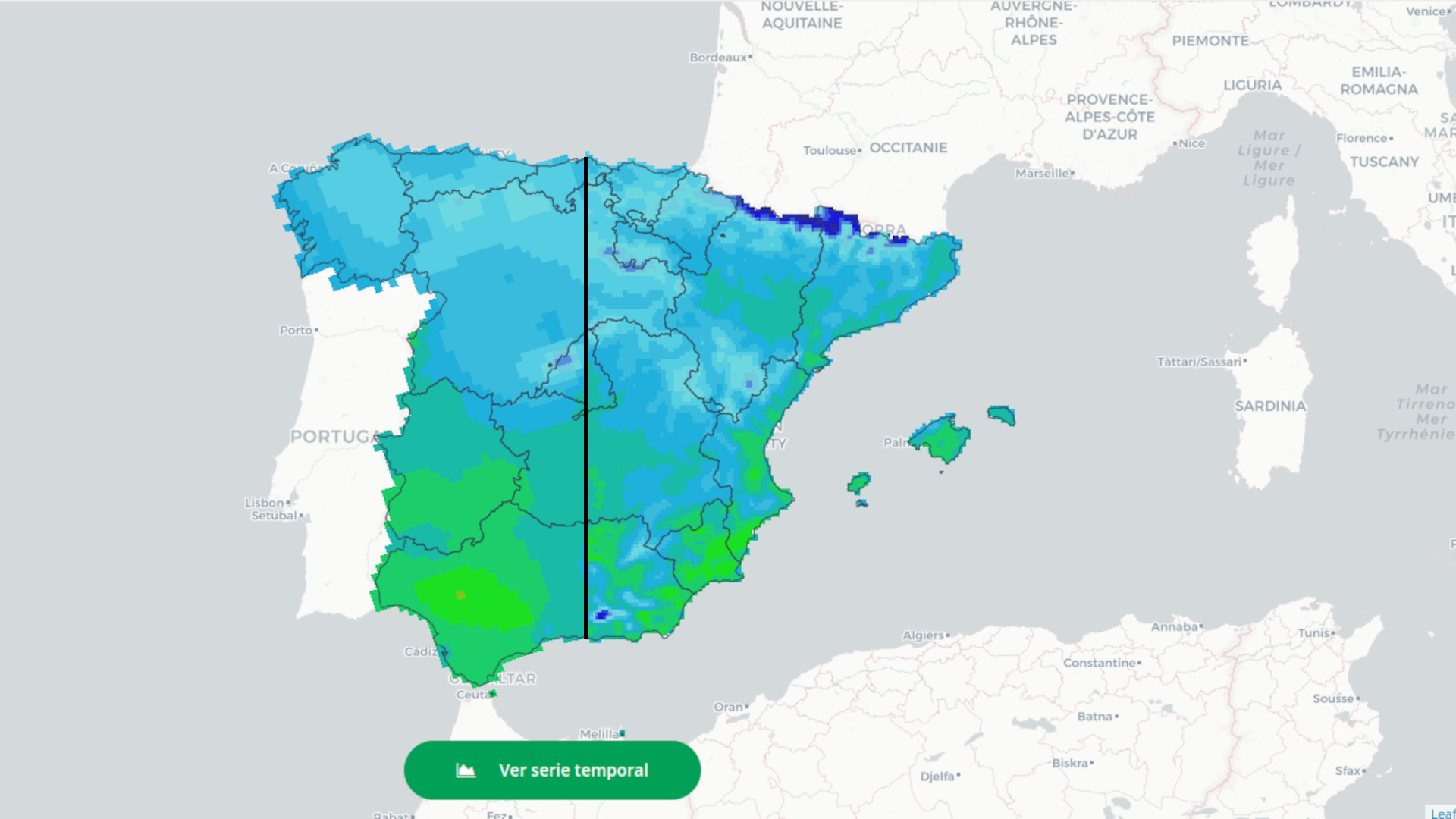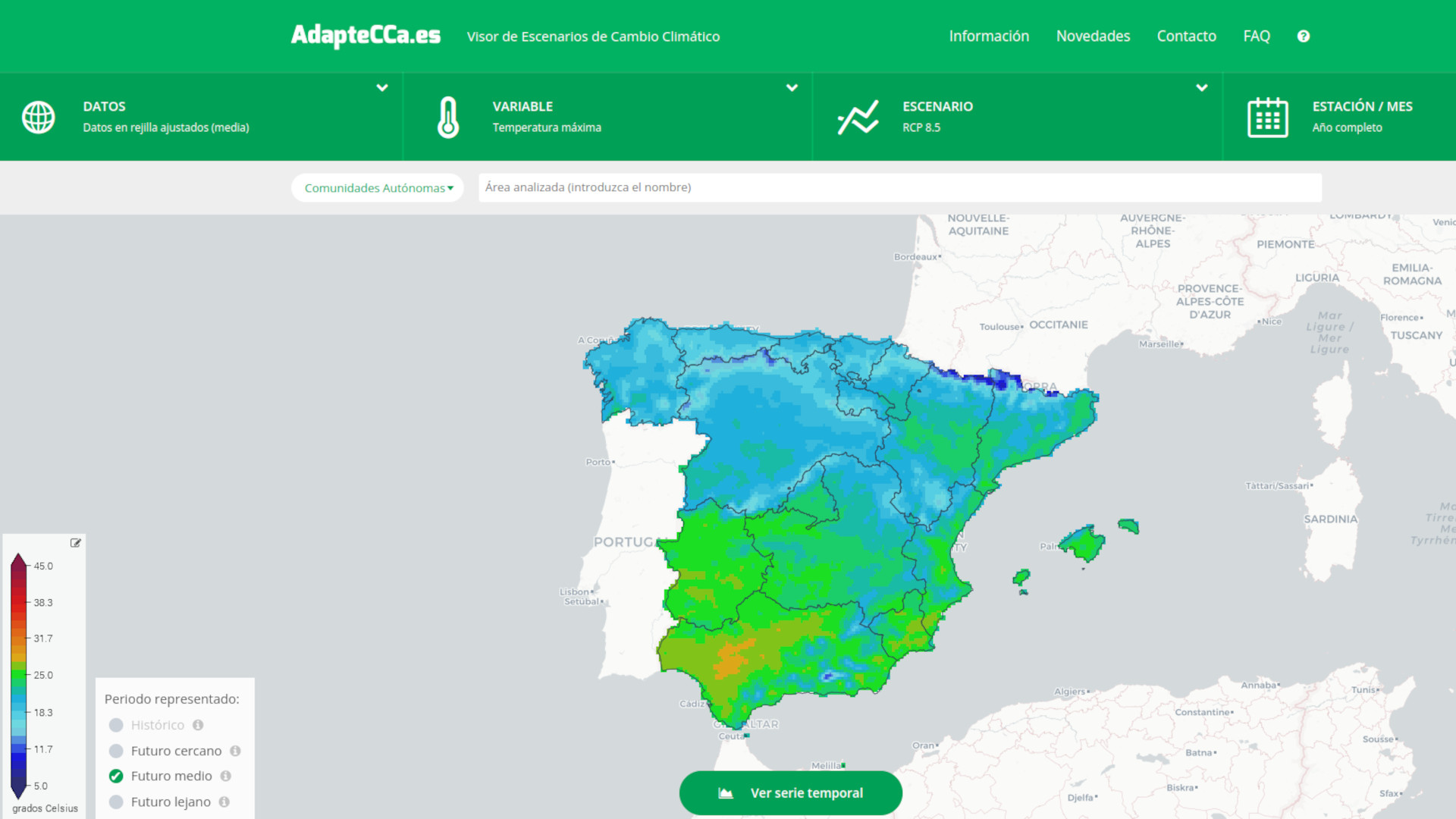In 2024 there have been plenty of extreme weather events around the globe and the need for forecasting and adaptation to anthropogenic climate change is becoming increasingly evident. In order to provide even more accurate and user-friendly projections, this year we’ve updated and expanded the AdapteCCa Climate Change Scenario Viewer.
Find all the details of this latest update below.
What's new?
We could divide the new features into three sections: increased resolution via the use of 5 km data grids (until this latest update they were 11 km), the use of a greater number of climate models and a new bias-adjustment method. But let's take it one step at a time.
Frist, a new 5 km resolution observation grid has been included (which also represents an improvement —higher resolution— compared to the one used in the previous version): the ROCIO_IBEB grid, developed by Spain’s State Meteorological Agency for mainland Spain and the Balearic Islands, which contains daily data on precipitation, maximum temperature and minimum temperature, from 1951 to 2022.
Furthermore, the inclusion of a greater number of models allows for a better characterisation of the uncertainty associated with climate projections. Thus, a set of 28 climate indices dependent on variables such as maximum temperature, minimum temperature and precipitation, adjusted for each of the 46 EURO-CORDEX models (nested to the global CMIP5 projections), included in the Sixth Assessment Report of the Intergovernmental Panel on Climate Change (IPCC-AR6)for the regional analysis of climate change, have been calculated.
And finally, ISIMIP3 has been chosen as a new bias-adjustment technique, as detailed in the next question.

How is the information in the models adjusted?
In order to get climate model simulations to better match reality, we use series of local observations and apply the so-called ‘bias adjustment techniques’, which are statistical correction techniques that allow to downscale climate projections and calibrate model outputs with actual observations in the historical period, thus allowing the assessment of the local and regional effects of climate change in a robust way.
We have extensive experience here at Predictia in the application of different bias adjustment techniques and in providing regionalised and customised climate projections, through the development of our Climadjust web service. The projections of climate variables and derived indices adjusted using these techniques are essential for implementing adaptation policies and developing strategic plans in the short, medium and long term.
In this latest update of the Adaptecca viewer, the technique applied for bias adjustment was ISIMIP3 (Lange, 2019), the same technique used in IPCC-AR6, which generally reproduces both trends and extremes well.
From which datasets were the indices calculated?
Gridded data at 5 kms resolution (which are featured in this latest update) include the following:
- EURO-CORDEX projections (adjusted). The viewer shows the values of the indices calculated from the adjusted variables of the 46 EURO-CORDEX models and for the mean of the models.
- AEMET grid observations (ROCIO_IBEB).
And regarding detailed data at stations:
- Regional projections elaborated by AEMET, by means of different statistical regionalisation techniques (See climate projections for the 21st Century, Statistical Regionalisation, AR5-IPCC, Analogue and SDSM Methods). The viewer shows the indices calculated for a set of models and their average using the Analogues and SDSM methods. (see Scenarios-PNACC 2017 guide).
- Detailed observations from AEMET's network of stations (AEMET-OBS), in the period 1970 to 2000.

A tool for planning and adaptation
The current AdapteCCa Climate Change Scenario Viewer was created a decade ago as one of the actions derived from the first National Climate Change Adaptation Plan. One of the objectives of the current Plan, which runs until 2030, is to make the best available knowledge on future climate change scenarios and projections available to all interested parties, so that society and decision-makers can plan their responses in advance, with reliable and up-to-date information.
In order to meet this objective, Predictia has been working for years with the Spanish Climate Change Office, the AEMET, the Fundación Biodiversidad and the Spanish National Research Council on the operational maintenance and updating of the viewer. These projections allow us to know what the evolution of the climate could be in the future, based on different scenarios of greenhouse gas emissions defined by the IPCC, as well as to detect trends in climate change and anticipate its possible effects.
Should you need to develop tools like this one and you are interested in hiring our services to carry out your project, do not hesitate to email us at predictia@predictia.es or call us on (+34) 942 76 44 10.
